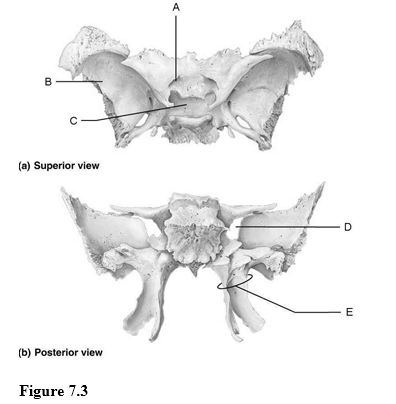Using Figure 7.3, match the following:

1) Anchor the pterygoid muscles.
2) Passageway for optic nerve.
3) Encloses hypophysis.
4) Forms parts of the middle cranial fossa, dorsal walls of the orbits, and external walls of the skull.
5) Allow cranial nerves that control eye movements to enter the orbit.
1) E
2) A
3) C
4) B
5) D
You might also like to view...
Which of the following structures does not contain CSF?
A. Dural sinus B. Lateral ventricle C. Central canal D. Subarachnoid space
The upper chambers are:
a. discharging chambers b. called ventricles c. receiving chambers d. both A and B above
The minimal metabolic activity required to maintain bodily functions in a mammal is known as the
a. resting metabolic rate. b. standard metabolic rate. c. minimal metabolic rate. d. basal metabolic rate. e. none of these.
Which of the following is an example of a sympathetic effect?
A) bronchoconstriction B) stimulation of muscle of urinary bladder C) serous salivary secretion D) ciliary muscle relaxation for far vision